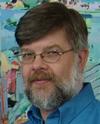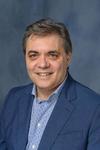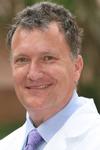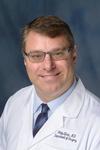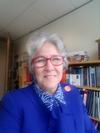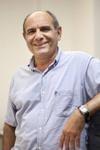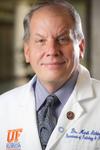

Research Terms
Industries
Co-Chair, Rare Disease Committee, CTSA Consortium-Child Health Oversight Committee, Chairperson; 2009 - present
American College of Cardiology, Fellow; 2006 - present
NIH Study Section Chair, Skeletal Muscle Biology, Chairperson; 2006 - 2009
American Society of Gene Therapy Coordinating Reviewer, 2002-present, Chair 2009, Chairperson; 2002 - present
NIH Study Section Member, Skeletal Muscle Biology, Member; 2001 - 2008
Southern Society for Pediatric Research, Member; 2000 - present
Society of Regenerative Medicine and Stem Cell Biology, Member; 2000 - present
American Pediatric Society / Society for Pediatric Research, Member; 2000 - present
Cardiovascular Diseases in the Young , Member; 1997 - present
American Society of Gene Therapy – Program Committee and Member, Member; 1997 - present
American Heart Association Reviewer, Member; 1996 - present
American Academy of Pediatrics, Fellow; 1993 - present
International Society for Heart and Lung Transplantation, Member; 1993 - present
American Society for Cell Biology, Member; 1991 - present
American Medical Association, Member; 1984 - present
Powell Gene Therapy Center (Health Science Center)
| Director |
Barry Byrne |
| Phone | (352) 273-5520 |
| Website | http://powellcenter.med.ufl.edu/ |
| Mission | The primary mission of the Gene Therapy Center at the University of Florida is to merge molecular genetics research and health care delivery by developing new therapeutic strategies for the treatment of human diseases that involve gene transfer. The diseases that might benefit from gene therapy include: hereditary diseases such as cystic fibrosis or hemophilia; somatic genetic defects such as cancer; inflammatory diseases such as sepsis; and chronic diseases that have a genetic or viral component such as heart disease and hepatitis. |
Child Health Research Institute
| Director |
Barry Byrne |
| Phone | 352-273-9001 |
| Website | https://research.pediatrics.med.ufl.edu/about/chri/ |
| Mission | The Child Health Research Institute was established in 2006 to provide the environment necessary to focus on and develop a wide variety of unique research concepts and to support pilot research activities of faculty to obtain data necessary to submit research proposals to outside agencies. The institute also supports fellows and residents during their research rotation which is a requirement of their Pediatric and Pediatric Sub-Specialty training programs. The development of a sustainable Pediatric research program that encompasses basic science, bench-to-bedside, clinical and outcomes projects has required focused administrative support and stable infrastructure that supports initiative from within and outside of the Department of Pediatrics. The Child Health Research Institute was established and continues to function to further these research initiatives that generate extramural funding for the PIs. |
This production of highly concentrated and potent Adeno-Associated Virus (AAV) vectors has significant advantage over available protocol and allows for large-scale manufacturing of the virus. More than 6 percent of all gene therapy clinical trials worldwide use AAV vectors due to their ability to transfer genetic material to non-dividing cells and apparent lack of a human immune response. Unfortunately, AAV vectors are expensive because they only can be manufactured in small batches. University of Florida researchers have used a suspension format to produce high quality AAV vectors that are significantly more potent than existing vectors and allow for large-scale manufacturing.
Large-scale production of highly potent AAV vectors
AAV vectors are typically produced using transfection or infection on an adherent flat platform, which limits scale-up manufacturing. By changing this protocol, University of Florida researchers were able to produce a higher yield of a more potent vector particle in a format suitable to scale up, both for research and commercial goals.
This purification of recombinant adeno-associated virus serotype three (rAAV3), eight (rAAV8) and nine (rAAV9) uses inexpensive, efficient reagents and is easily adaptable to large-scale manufacturing. An AAV is a small nonenveloped virus that packages a linear single-stranded DNA genome. rAAV vectors have become popular for their versatile and successful use as gene therapy delivery vehicles. rAAV3, rAAV8 and rAAV9 particles are often used in pharmaceuticals, vaccines, screening for phenotypes, and understanding the pharmacokinetics of a drug. All of these uses require a highly pure rAAV product. Current processes to purify AAV vectors require the use of buoyant density gradients, such as CsCl, or iso-osmotic medium iodixanol discontinuous gradients. While these are useful laboratory practices, they are not easily adapted for good manufacturing process (GMP) protocols. This purification of rAAV3, rAAV8, rAAV9 and other AAVs, however, is easily adaptable to large scale manufacturing because the reagents used are inexpensive, safe, and work quickly.
Production of small scale rapid purification kits for rAAV3, rAAV8 and rAAV9 as well large-scale production of clinical grade vector.
This versatile, efficient purification of rAAV3, rAAV8 and rAAV9 particles is rapid, cost-effective and more effective than available methods. Researchers selected AAV9, as it is one of the most challenging AAV serotypes to purify. The efficient, reproducible protocol takes advantage of two general biochemical properties of all characterized AAV serotypes: the low isoelectric point of a capsid and the relative biological stability of the viral particle in an acidic environment. Researchers completed a simple and rapid clarification of cell lysate to remove the bulk of proteins and DNA by using off-the-shelf reagents such as sodium citrate and citric acid. Centrifuging the mixture isolates the supernatant, which is subjected to cation exchange to elute the virus. Other spinning or filtration yields material of biochemical purity. This purification method works well, if not better, for purification of AAV serotypes 3 and 8 as well.


























































